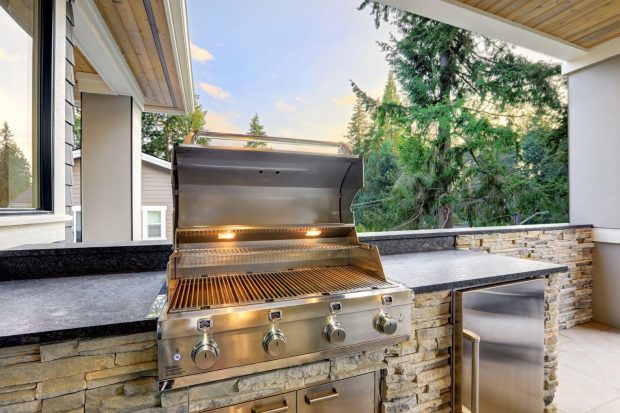How To Choose A Grill For Your Outdoor Kitchen
Outdoor kitchens are increasingly becoming popular in America and across the globe. If you’re looking to establish an outdoor kitchen, one of the primary items you’re going to invest in is a grill. The type of grill you choose should help you create a comfortable cooking and dining space. Unlike indoor grills, outdoor grills need to be more versatile as you’re likely to use them more often during spring, summer, and part of autumn. You also want to make sure that your grill is big enough to serve more guests and handle the harsh summer weather. So, how do you ensure you enter and leave the market with the right grill for your outdoor kitchen? Below are six tips to help you choose the right outdoor grilling appliance.


1. Assess Your Needs
Your first step in finding the right grill for your outdoor kitchen is determining your needs. Start by assessing why you need the grill in the first place. Do you have enough space to set up an outdoor kitchen? Is it spacious enough to hold the size of grill you’re looking to buy? How often will you be grilling? Do you entertain guests often? What do you grill often? Do you have a specific fuel preference? How much money are you going to spend on an outdoor grill? All these questions can help you start your search for the right grill in the right direction. Ideally, you want to have an answer for each question and use the answers to search for your grill.
2. Conduct Enough Research
Today, you don’t need to walk from one appliance store to another to check and buy an outdoor grill. You can research the type of grill you want, compare brands and prices and investigate them thoroughly before making any purchase. Read reviews, preferably from multiple sources, and pinpoint common problems and potential issues. Some complaints have more impact than others. You also want to research whether the grills you’re checking have the features you’re looking for and fit your space needs. Once you have reviewed a few grills, you can write down the brands and models that suit your needs, ranging from the most impressive to the least preferred.
3. Set A Budget
With so many outdoor grill options, it’s easy to feel overwhelmed with all the grill models claiming to meet virtually all your needs. Whether you have thousands of dollars or a couple of hundred dollars, there will always be plenty of grills to choose from without going above your budget. While it’s fun to go through glossy magazines and explore a variety of grills on the internet, setting a budget helps you stick to your financial plan. That way, you can maximize your time by focusing on grill models that fit your budget. If you’re considering an inbuilt grill, you need to factor in the installation cost. Other costs to consider include gas line hook-up and shipping fees.
4. Consider Size And Space
The size of your outdoor space determines the size of grill you will buy. No matter how efficient, spacious, and versatile a grill is, it’s not going to be a great purchase if it won’t fit in the space you have designated for it. If you have not yet started building your outdoor kitchen, the grill size may not be much of a limitation. However, you will still want to consider the layout and the placement of the grill. You want to ensure that you have enough space for movement, preparation, cooking, and dining. If you’re buying a grill for an existing outdoor kitchen, the size of the grill is a significant factor. Make sure you get the correct measurements to ensure you get a grill that fits the space available.
5. Think About Fuel Type
Outdoor grills come in three main types based on how they’re fuelled–electrical grills, natural gas or propane grills, and charcoal grills. All three types come in a wide range of models to suit different buyer needs. Charcoal grills are cheaper and more reliable as they can be moved from one place to another. That means you can continue grilling your food elsewhere apart from the designated spot. Additionally, if you don’t intend to use electricity or carry heavy propane cans with you, a charcoal grill may be the option for you. Electric grills require electricity to run. They offer a clean and efficient way of grilling your food. However, they can be significantly more expensive than natural gas and charcoal grills. Propane or natural gas grills are powered by propane or gas. They offer better temperature control but can be slightly more expensive than charcoal.
6. Check Additional Features
Modern grills are fitted with features to help improve their functionality and efficiency. Manufacturers are always working on fixing consumer problems by adding a handful of features such as storage spaces and alternative cooking spaces. For instance, most large outdoor grills come with two side burners to heat meals such as sauces and keep the already cooked food warm. If you entertain guests often, you can also go for a grill with cabinets for storing wine glasses and bottles, so you don’t have to keep rushing in and out of the house during meals to fetch a drink for your guests.